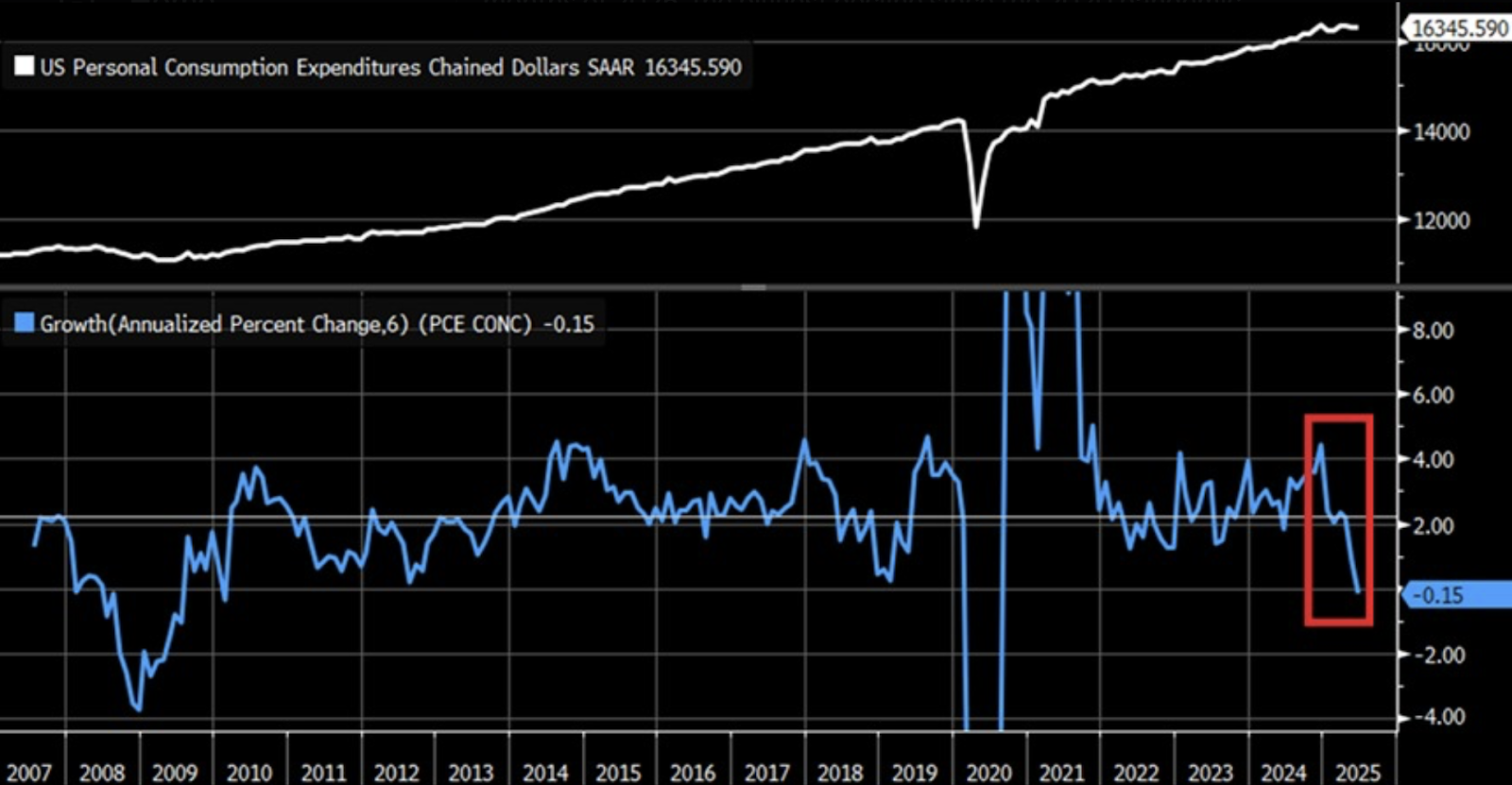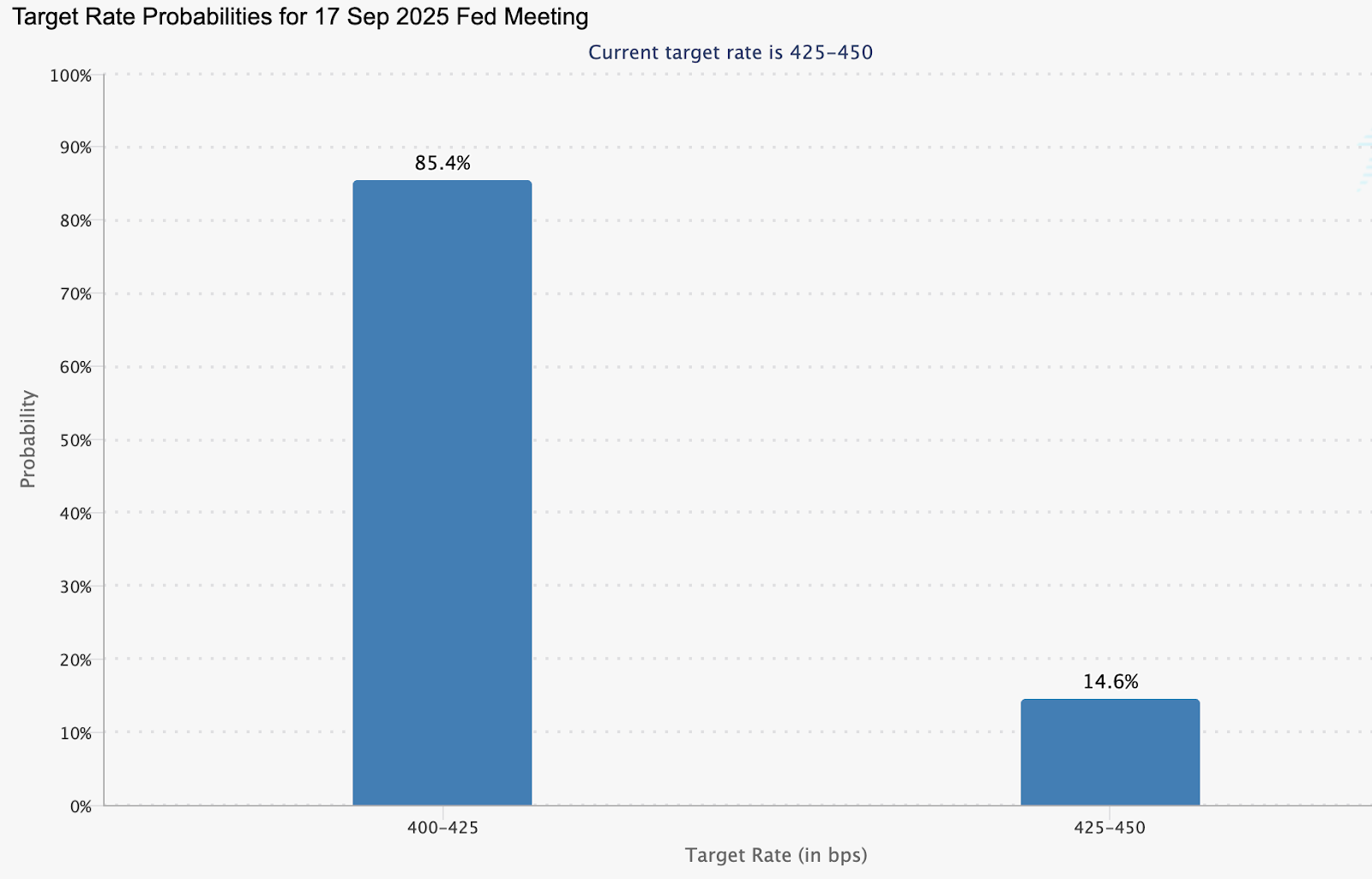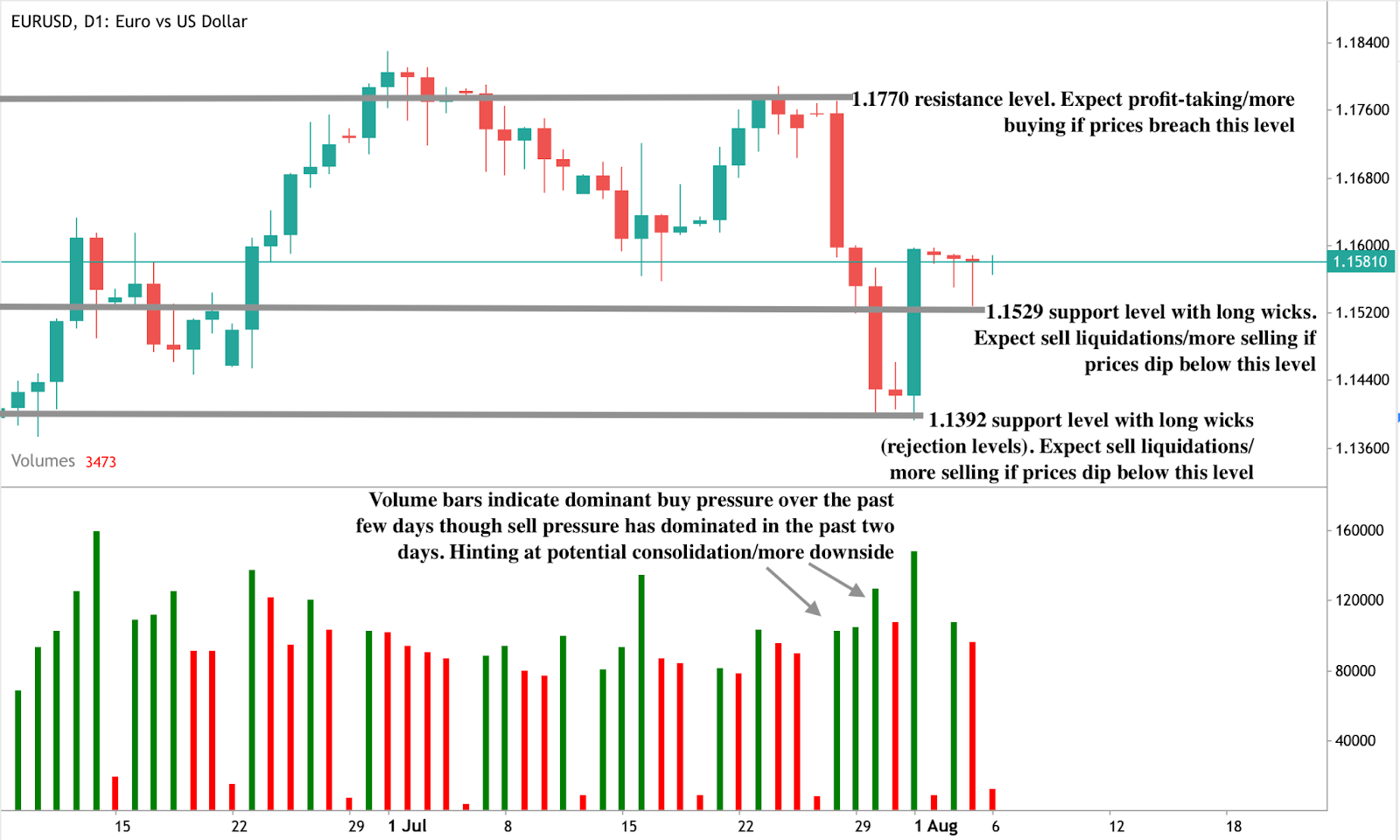Why EUR/USD traders should be watching American grocery aisles

U.S. consumer behaviour is shifting decisively, with inflation-adjusted spending falling for the first time since the pandemic. Personal consumption expenditures declined by 0.15% in the first half of 2025, while major retailers report reduced demand - even among wealthier households. This downturn in household spending comes as EUR/USD consolidates around 1.1570, with traders awaiting the next macro trigger. According to analysts, signs of frugality - like shrinking basket sizes, rising coupon usage, and a move toward low-cost brands - could be early indicators of broader economic weakness that may influence both Federal Reserve policy and the direction of the currency pair.
Key takeaways
- U.S. consumers are cutting back on spending, even on essentials, as high prices and economic uncertainty take hold.
- Analysts say this shift in behaviour could feed into the Federal Reserve’s policy path and weaken the dollar.
- EUR/USD is consolidating around 1.1581, but a breakout could occur if policy and sentiment shift.
The U.S. consumer is retreating - and not quietly
Retail data, brand commentary, and day-to-day observations all point to the same trend: the free-spending habits that emerged after COVID-19 are waning.
Across demographics - from college students in Detroit to upper-middle-class families in Los Angeles - there’s a clear move toward restraint. Coupons, bargain-hunting, and downgrades to cheaper product lines are back in fashion.
Major consumer brands are feeling the shift. Mondelez, the maker of Oreo and Ritz, reported that U.S. sales have declined, even though global numbers remain strong. Chipotle has seen a dip in premium burrito orders, while Domino’s Pizza has leaned into “buy two, get one free” promotions to maintain traffic.
Procter & Gamble, which owns brands like Tide and Pantene, has noticed a slowdown in demand for essentials. Even Invisalign has reported that some consumers are opting for cheaper metal braces.
According to the Wall Street Journal, this trend reflects a deeper, more strategic shift in purchasing behaviour - what some analysts describe as a structural response to persistent inflation and economic anxiety, rather than a short-term adjustment.
Empower, a U.S. retirement asset manager, found in a June survey that over half of American adults now spend about four hours a day managing financial concerns. That’s the equivalent of a part-time job, all centred on making money stretch further.
Federal Reserve policy EUR/USD
As of 6 August, the EUR/USD pair trades in a tight range around 1.1581. Investors appear hesitant to take fresh positions, awaiting both U.S. inflation data and potential changes at the Federal Reserve. However, the clues may already be in the aisles of American supermarkets.
Historically, when economic uncertainty rises, the U.S. dollar often gains strength as investors seek safe-haven assets. Analysts suggest the recent drop in personal consumption expenditures - down 0.15% in the first half of 2025, the steepest fall since the pandemic - could be an early sign of recessionary conditions.

This narrative is reinforced by weak July data showing flat services sector growth and rising input costs. In the short term, these developments tend to support the dollar, as markets position defensively. But this dynamic could reverse if the Federal Reserve interprets the consumer pullback as a signal to pivot.
According to CME FedWatch data, traders are already pricing in over an 85% chance of a rate cut in September, with more cuts expected through the end of the year.

If realised, many anticipate this would reduce the appeal of U.S. assets and put downward pressure on the greenback, potentially lifting EUR/USD toward the 1.1590 –1.1800 region.
Meanwhile, Europe has its own sensitivities. The Eurozone, particularly Germany, relies heavily on exports to the U.S. A slowdown in American demand could weigh on Eurozone growth and, by extension, the Euro itself. However, analysts point out that if the European Central Bank holds rates steady while the Fed loosens policy, the narrowing rate gap may support the Euro, partially offsetting trade-related weaknesses.
EUR/USD technical analysis
At the time of writing, the pair is held in a tight range, with sell pressure evident on the daily chart. The volume bars show dominant buy pressure over the past few days, with sellers showing a strong reaction in the past two days. This hints at either a consolidation or a potential downturn. Should the downturn materialise, we could see prices find support floors at the 1.1529 and 1.1392 levels. Conversely, a price uptick could find resistance at the 1.1770 price level.

The U.S. Dollar Index (DXY) is hovering around 98.80, consolidating after a sharp fall driven by last week’s disappointing jobs report. Despite this, traders remain cautious, awaiting the next round of inflation data and President Trump’s announcements regarding Federal Reserve leadership changes.
The case for the grocery aisle becoming the new macro signal
What’s unfolding in the cereal aisle may offer better foresight than some traditional indicators. Kroger, a major U.S. retailer, has reported that while store visits are rising, basket sizes are shrinking. Consumers are putting fewer items in their carts and choosing private-label goods over big-name brands. These micro-decisions - made thousands of times a day - are shaping the macro landscape.
Analysts suggest this pattern of cautious spending could signal further demand-side weakness ahead. If households continue to cut back, the Fed may find itself compelled to act more decisively. And if it does, currency markets will feel it first.
Frequently asked questions
Why does U.S. consumer spending affect EUR/USD?
Because the USD is a global reserve currency. Weak spending reduces growth expectations, influencing the Fed’s policy path and the dollar’s value versus the Euro.
Are tariffs contributing to the spending shift?
Yes. Trump’s expansion of tariffs on semiconductors, pharma, and consumer goods has raised prices and added pressure on household budgets, fuelling this behavioural reset.
Is Europe immune to the slowdown?
Not entirely. Europe’s export-driven economies are vulnerable to U.S. demand weakness. However, ECB policy decisions could help support the Euro if the Fed turns dovish.
What should traders watch now?
Key data includes U.S. CPI, Eurozone retail sales, Fed rate guidance, and any policy signals from Trump’s upcoming Fed appointments.
Investment implications
EUR/USD may remain rangebound in the short term, but analysts warn that consumer spending data could be the hidden catalyst for a breakout. A deeper pullback in U.S. demand - especially if it leads to policy easing - could weaken the dollar and push the pair higher. On the other hand, if global recession risks mount, EUR/USD could move lower as both currencies face headwinds.
For now, traders may want to focus less on spreadsheets and more on shopping lists. The economic story is being told one grocery basket at a time.
Disclaimer:
The performance figures quoted are not a guarantee of future performance.



